Copyright 2016 by TPR Education IP Holdings, LLC.
All rights reserved.
Published in the United States by Penguin Random House LLC, New York, and in Canada by Random House of Canada, a division of Penguin Random House Ltd., Toronto.
Terms of Service: The Princeton Review Online Companion Tools (Student Tools) for retail books are available for only the two most recent editions of that book. Student Tools may be activated only twice per eligible book purchased for two consecutive 12-month periods, for a total of 24 months of access. Activation of Student Tools more than twice per book is in direct violation of these Terms of Service and may result in discontinuation of access to Student Tools Services.
The Princeton Review is not affiliated with Princeton University.
Production Artist: Deborah A. Silvestrini
Production Editors: Kathy G. Carter and Liz Rutzel
Acknowledgments
Nick Leonardi would like to thank Merissa Remus for keeping him honest through her extensive reviewing of this book. In addition, Nick would like to thank all of his students past and present, who have helped make him a better teacher and are carrying the torch forward into a future that promises to be incredibly bright.
The Princeton Review would like to thank everyone who worked on this book, from content development to editorial to design to production: Nick Leonardi, Merissa Remus, Chad Chasteen, Maurice Kressler, Deborah A. Silvestrini, Kathy G. Carter, and Liz Rutzel.
Contents
Register Your Book Online!
Go to PrincetonReview.com/cracking
Youll see a welcome page where you can register your book using the following ISBN: 9781101921562
After placing this free order, youll either be asked to log in or to answer a few simple questions in order to set up a new Princeton Review account.
Finally, click on the Student Tools tab located at the top of the screen. It may take an hour or two for your registration to go through, but after that, youre good to go.
If you are experiencing book problems (potential content errors), please contact with the following information:
your full name
E-mail address used to register the book
full book title and ISBN
your computer OS (Mac or PC) and Internet browser (Firefox, Safari, Chrome, etc.)
description of technical issue
Once youve registered, you can
Reinforce chemistry knowledge with practice questions in the style of the AP Chemistry Exam and SAT Chemistry Subject Test
Access and download Key Points review sheets for each chapter
Consult lists of Key Terms used in the book to make sure youve got everything straight
Check to see if there have been any corrections or updates to this edition
Look For These Icons Throughout The Book
 Online Supplements
Online Supplements
 More Great Books
More Great Books
About This Book
WHY HIGH SCHOOL UNLOCKED?
It might not always seem that way, especially after a night of endless homework assignments, but high school can fly by. Classes are generally a little larger, subjects are more complex, and not every student has had the same background for each subject. Teachers dont always have the time to re-explain a topic, and worse, sometimes students dont realize that theres a subject they dont fully understand. This feeling of frustration is a bit like getting to your locker and realizing that youve forgotten a part of the combination to open it, only theres no science superintendent you can call to clip the lock open.
Thats why we at The Princeton Review, the leaders in test prep, have built the High School Unlocked series. We cant guarantee that you wont forget something along the waynobody canbut we can set the tools for unlocking problems at your fingertips. Thats because this book not only covers all the basics of Chemistry, but it also focuses on alternative approaches and emphasizes how all of these techniques connect with one another.
How to Use This Book
The speed at which you go through this material depends on your personal needs. If youre using this book to supplement your daily high-school classes, we recommend that you stay at the pace of your class, and make a point out of solving problems in both this book and your homework in as many ways as you can. This is the most direct way to identify effective (and practical) tools.
If, on the other hand, youre using this book to review topics, then you should begin by carefully reviewing the Goals listed at the start of each chapter, and taking note of anything that seems unfamiliar or difficult. Try answering some of the example problems on your own, as you might just be a little rusty. Applying science skills is a lot like riding a bike, in that it comes back quicklybut thats only true if you learned how in the first place. Take as much time as you need, then, to connect with this material. As a real test of your understanding, try teaching one of these troublesome topics to someone else.
Ultimately, theres no wrong way to use this book. You wouldnt have picked this up if you werent genuinely interested, so the real key is that you remain patient and give yourself as much time as you need before moving on. To aid in this, weve carefully designed each chapter to break down each concept in a series of consistent and helpful ways.
Goals and Reflect
Each chapter begins with a clear and specific list of objectives that you should feel comfortable with by the end of the chapter. This allows you not only to assess which sections of the book you need to focus on, but also to clarify the underlying skills that each example is helping to demonstrate. Think of this sort of goal-based structure as a scavenger hunt: Its generally more efficient to find something if you know what youre looking for.
Along those lines, each chapter ends with an opportunity to self-assess. Theres no teacher to satisfy here, no grade to be earned. That said, youre only hurting yourself if you skip past something. Would you really want to jump into the pool before learning how to swim? Youve got to determine whether you feel comfortable enough with the foundational understanding of one chapter before diving deeper.


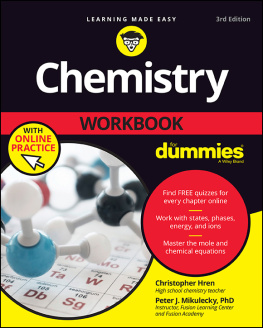
![Moore - Chemistry II for dummies [learn to: grasp difficult chemistry concepts ; supplement classroom learning with confidence ; tackle problems you may face in your Chem II course]](/uploads/posts/book/221508/thumbs/moore-chemistry-ii-for-dummies-learn-to-grasp.jpg)
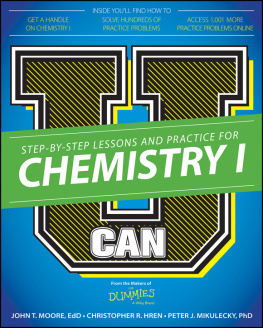
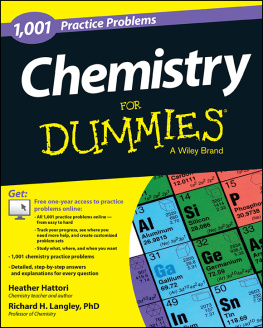
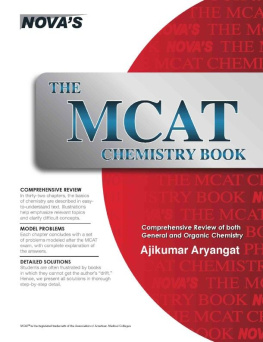


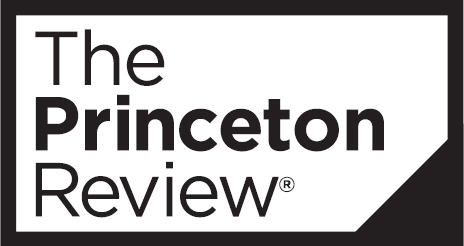
 Online Supplements
Online Supplements More Great Books
More Great Books